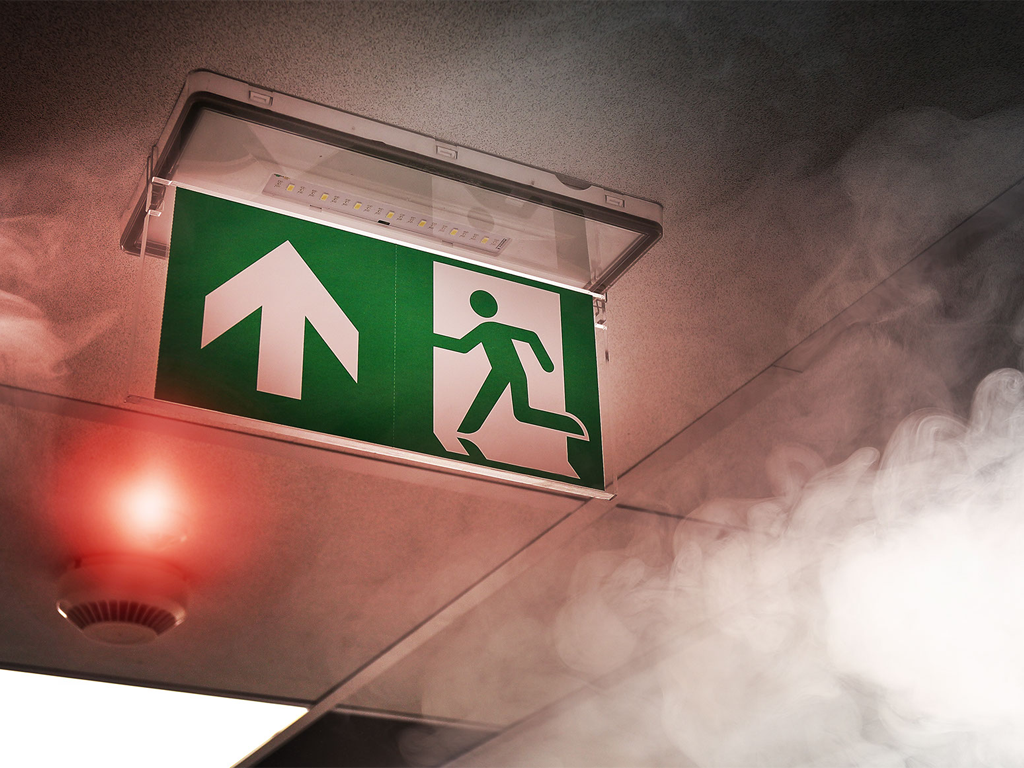Are You Monitoring Life Safety Systems? Maybe You Should

Fire alarm systems have been monitored for decades. Recently, however, there are new opportunities to monitor other life safety systems within a building. A Digital Alarm Communicator Transmitter (DACT) has been the most common device used to transmit signals off site to a supervising station. The pathways by definition of a DACT would be telephone lines. Today, hard copper telephone lines are no longer available or very difficult to find at best. The industry has gone to using Voice over Internet Protocol, (VoIP). Many times, the type of VoIP used does not meet the requirements found within NFPA 72, the National Fire Alarm and Signaling Code. NFPA 72 requires a DACT to be connected to a telephone line type of service that has the functionality of a managed facilities-based voice network (MFVN). This basically is a network of telephone lines that are “managed” by the service providing company, not the owner.
Because of the limited access to true MFVN classification of service and the cost, NFPA 72 has for many cycles allowed other methods of connectivity or pathways. These pathways could include IP, radio, cellular, and others. With this in mind, a service provider should be on the lookout for changeover possibilities to remove old DACTs and replace them with a different pathway, possibly saving an owner substantial cost of overpaying for telephone line type of service.
What to monitor? NFPA 72 states that “all fire alarm signals received by a supervising station shall be immediately retransmitted to the communications center.” It should be noted the signals are to be transmitted to a supervising station which in turn retransmits those signals to the communications center. The fire department cannot be contacted directly by the protected premise’s fire alarm system. There are some allowances for the fire alarm at the protected premise to contact the fire department directly. One allowance, with the authority having jurisdiction (AHJ) approval is a private radio system using the fire department frequency, where permitted by the fire department.
When NFPA 72 states “all signals” the question is, what are those signals? In chapter 26 of NFPA 72 it addresses the different types of signals.
Per NFPA 72, “Fire alarm signals received at the supervising station shall be retransmitted to the communications center by one of the following methods: (1) Signals that are identified by zone at the supervising station shall be retransmitted by zone to the communications center, (2) Signals that are identified as an individual point or points at the supervising station shall be retransmitted by point or points to the communications center, and (3) Signals that are received at the supervising station as events shall be retransmitted by event to the communications center.”
NFPA 72 does not require systems to be monitored per each point, by zone or by event. Rather, NFPA 72 allows for each method to be used. There may be a local requirement, owner requirement or maybe an insurance underwriter requirement for a particular method to be used to identify to the supervising station as to what the signal needs to be, but NFPA does not require one over another. NFPA 72 in many aspects is a tool bag with different methods to accomplish life safety objectives. An engineer or designer uses these tools to help create a system with functionalities to meet those life safety objectives.
For method (1) above, it allows for a zone method to be used to transmit those signals. Zones could be a group of devices in an area of a building, for example, “smoke detectors, first floor, east wing,” where all smoke detectors in this particular area would cause the same signal to be sent to the supervising station. Method (2) above allows for each point to be sent individually to the supervising station. For example, “fifth floor, room 505 smoke detector.” The custom label for every point would be sent to the supervising station. The last method allowed is (3) above. This method allows for event type of reporting to be sent to the supervising station. This method takes the least amount of programming and configuration to function. For example, all fire alarm devices would activate and send a single event type of point, in this case “fire,” while a trouble anywhere in the system would send a generic “trouble” to the supervising station.
The more information a supervising station can send to the fire department’s communication center, the more efficient the response the fire department can offer. NFPA 72 allows for a single event of “fire” to be transmitted for any alarm device in the building. That signal would be sent to the supervising center, then the fire department, for example, “one main street, any town, USA”. The fire department would then need to go to the fire alarm control unit at the building upon arrival, determine what has activated the alarm and respond accordingly. However, if per point monitoring were offered the supervising station would receive, for example, “fifth floor, room 505 smoke detector.” Now the fire department already knows where the alarm has originated from and can formulate their response while enroute.
Take the last scenario even further. By sending all points to the supervising station the fire department could have better information and improve their response upon arrival. If in addition to the “fifth floor, room 505 smoke detector,” they also received “fifth floor, east hallway waterflow” the responders could understand that the fire is growing as more devices are activated.
Each of the methods above could be used, zone, per point or event. But each would be installed differently with different equipment. A zoned system could be done with a handful of relays programmed by the system or perhaps an internal communicator to the fire alarm control unit. An event reporting system would need maybe four relays (alarm, trouble, supervisory and maybe waterflow) and a small communicator. The per point communicator is the most involved and requires the most programming. All points in the fire alarm control unit would need to be programmed into the communicator for each device to transmit to the supervising station. Again, NFPA 72 allows for all three types of reporting and does not dictate one over another.
There are new requirements for Two-Way Emergency Communications Systems for Rescue Assistance. These systems have remote call stations at the areas of refuge for occupants found in many new buildings. The remote call stations need to transmit the call for help and provide two-way voice communications at a constantly attended location within the building. Further, NFPA 72 states that “The constantly attended location shall be located either within the building or at a monitoring location and be approved by the authority having jurisdiction.” This monitoring location is an opportunity for a maintenance installer to provide that service.
By Rodger Reiswig
Life Safety Systems. Life Safety Systems. Life Safety Systems. Life Safety Syste




